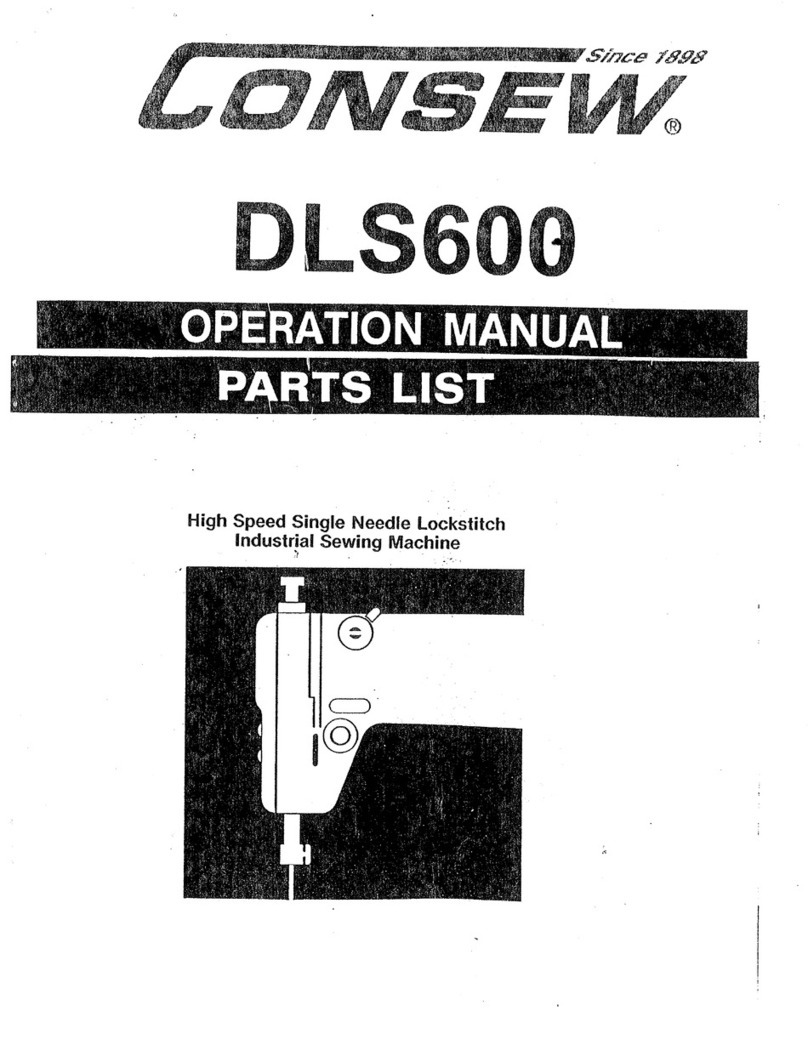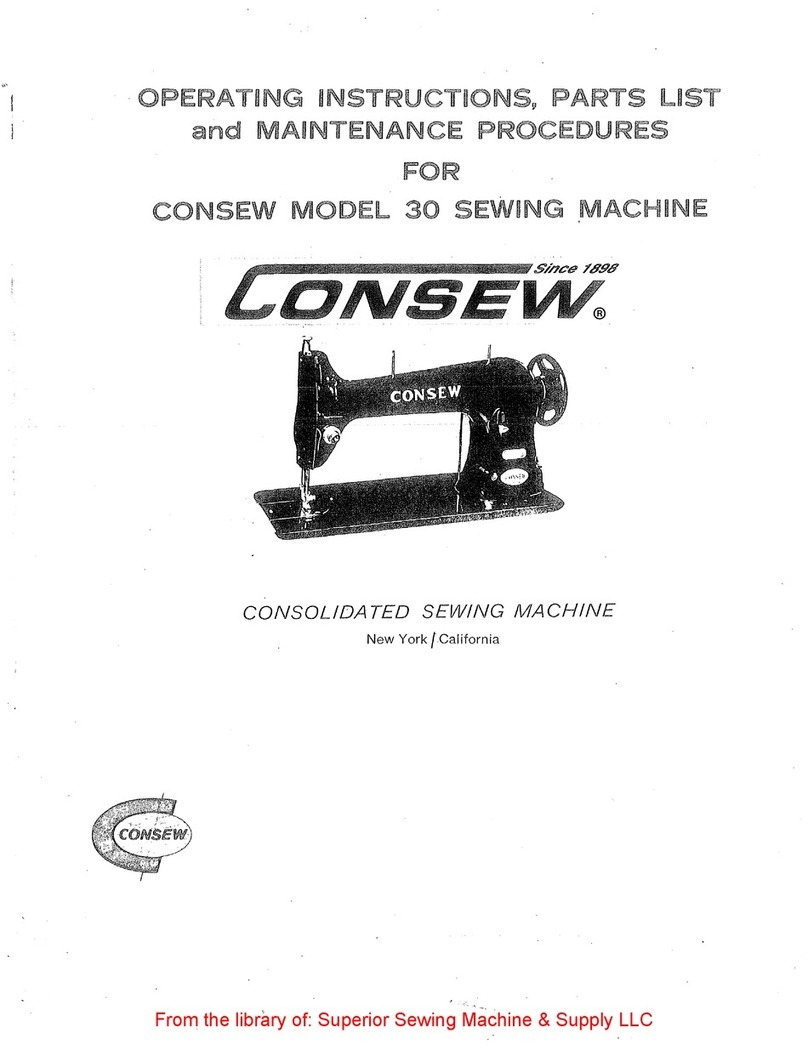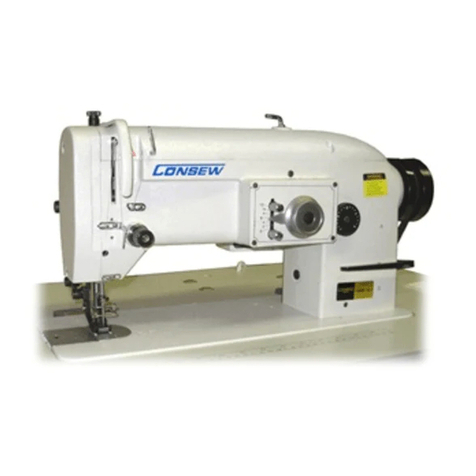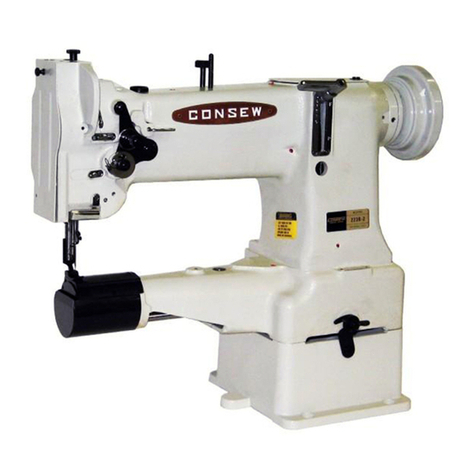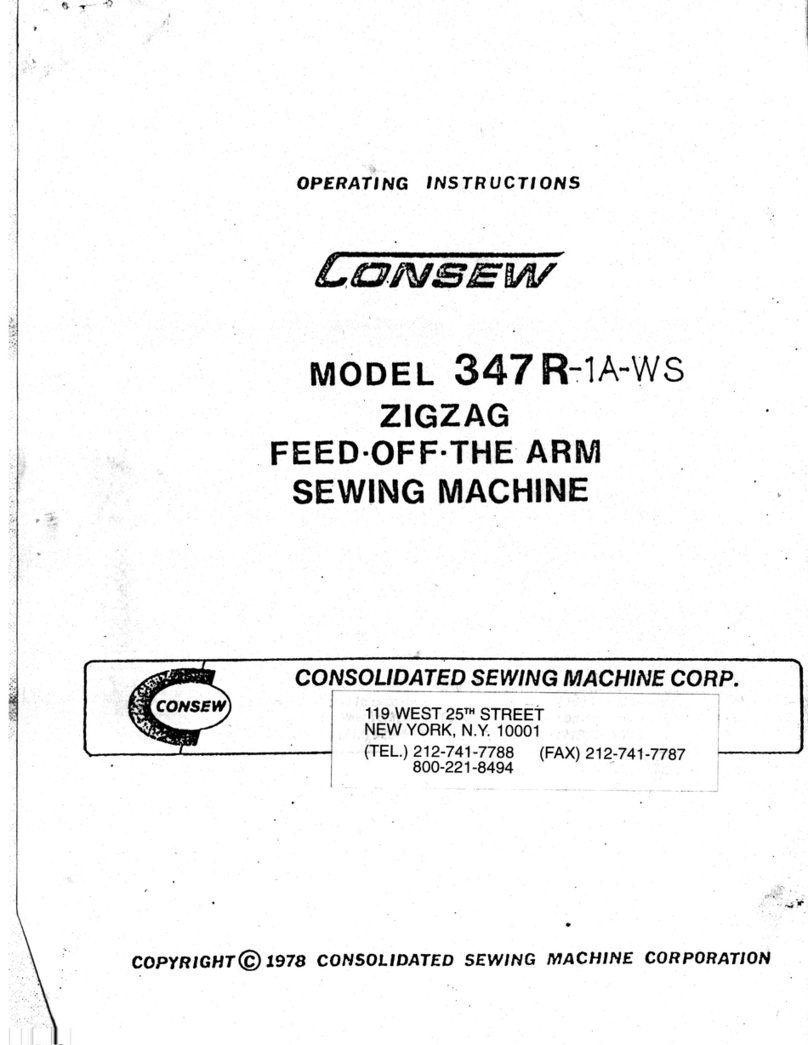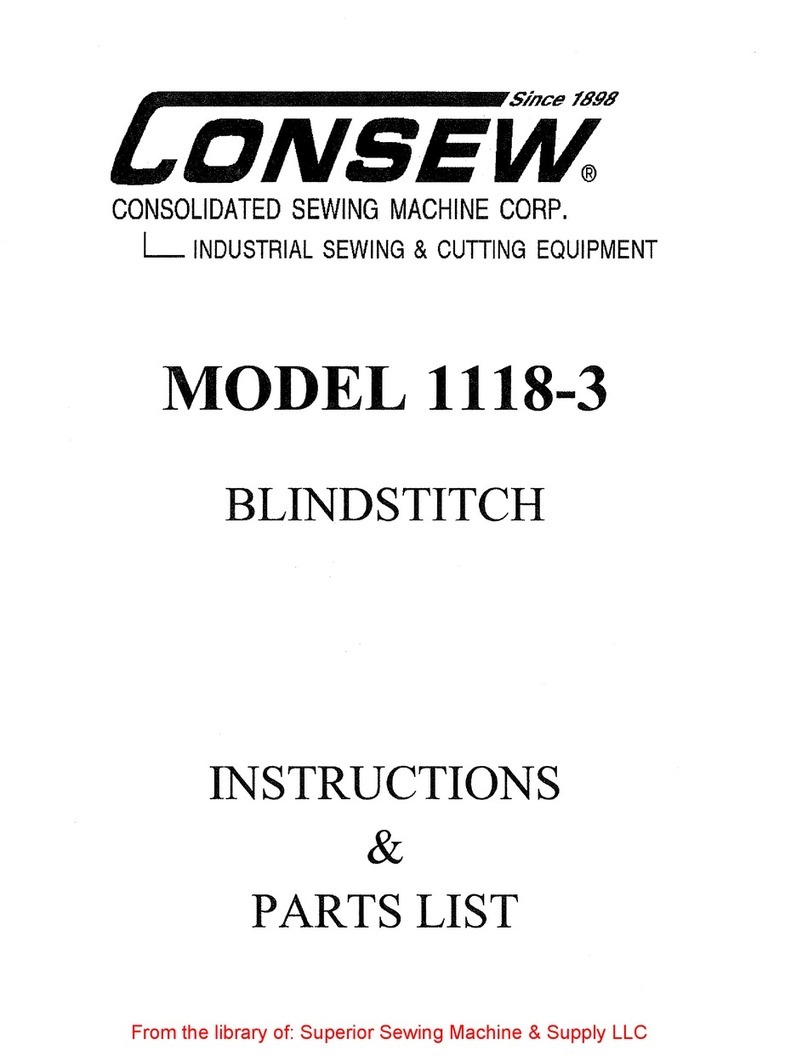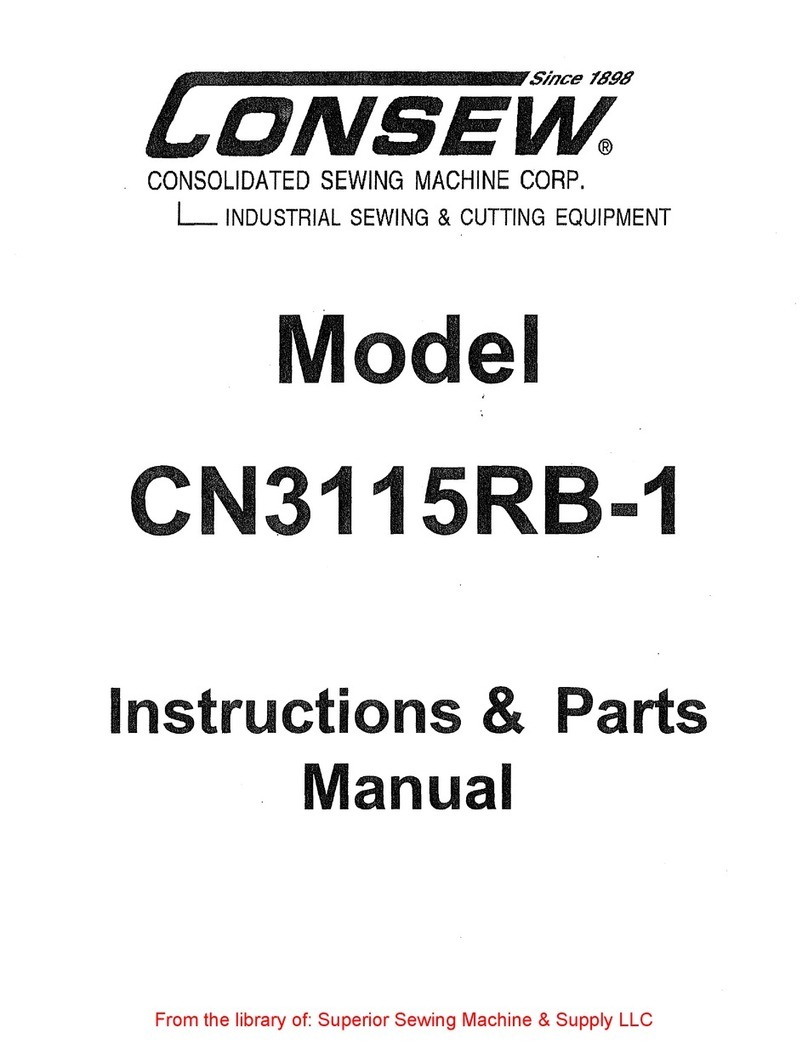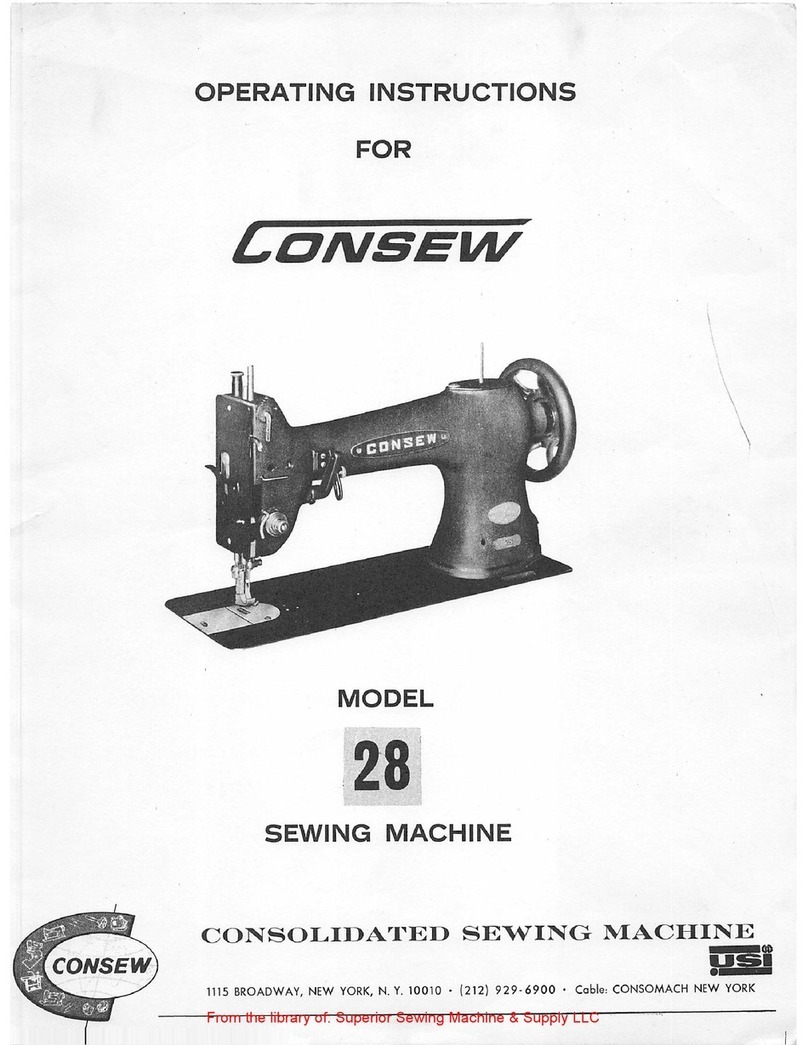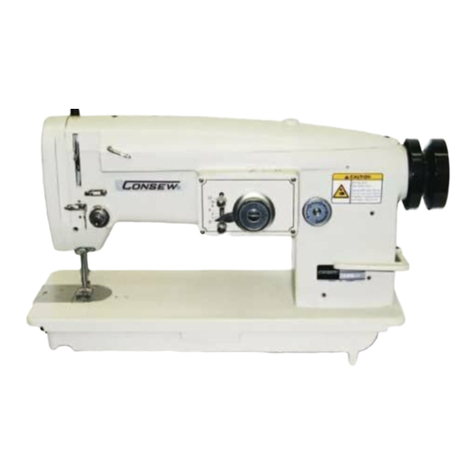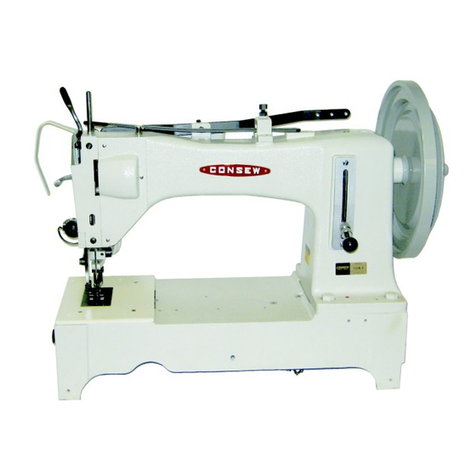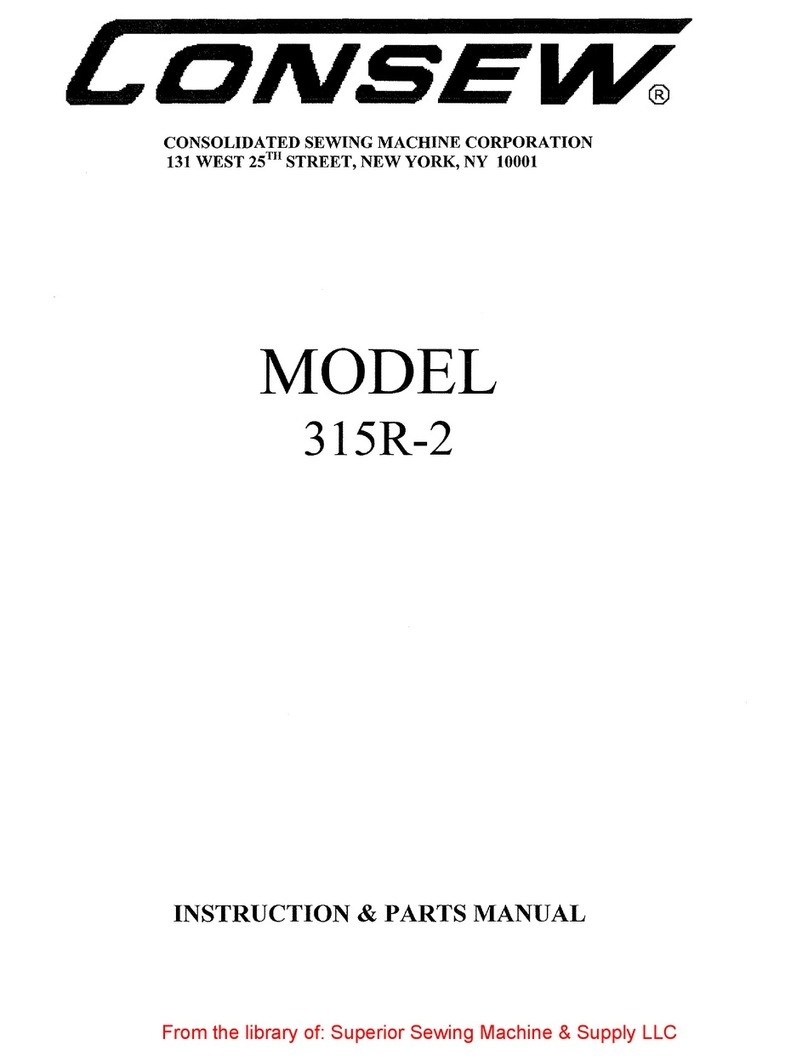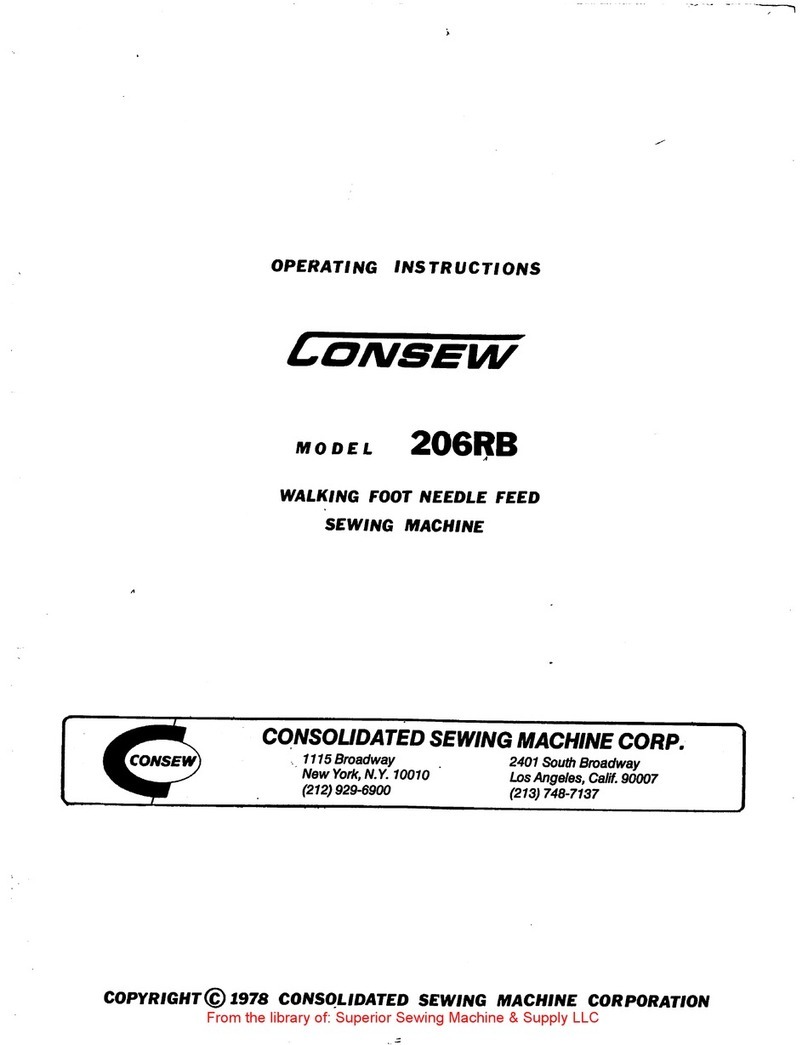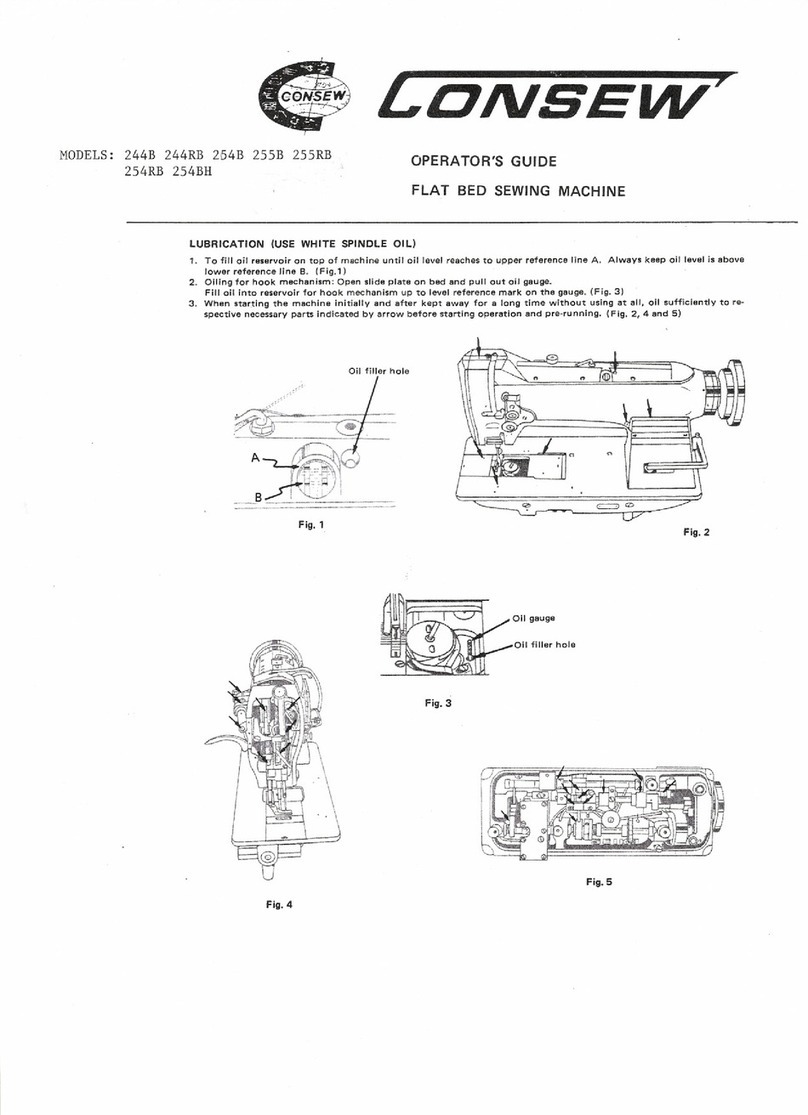NEEDLE
The
machine
is
set
up
to
use
135x17
in
sizes ranging from 14 to 24.
The thickness of
the
sewing
thread,
which
must pass freely through the needle eye,
determines
the
size
of
the
needle.
To
insert
the
needle,
turn
the
machine
pulley
toward you
until
the needle bar (1)
raises to its highest point, loosen the needle
set screw (2), and put the needle up into
the
needle
bar as far as it will
go,
with
the
long groove of the needle toward the left,
and tighten the needle set screw securely.
Cotton, synthetic,
silk
thread can be used according to your sewing purpose,
the
thickness of
thread
available is up to
#8.
Only left twist thread is to be used for the needle, to test for twist, hold
a length of thread between thumbs and index
fingers
of your hands. Turn
the
thread
counterclockwise,
if it will twist tighter, it has a left twist.
If it
unravels,
it
has
aright
twist.
The bobbin can be
wound
with either left or right twist thread.
INSERTING
AND
REMOVING BOBBINS
(Figs.
8 and 9)
1. Raise the needle bar to its highest point. Push open the right-hand
cover plate (1,
Fig.
8) on the arm of the machine.
Pull up the latch (2,
Fig.
8) and lift the bobbin from the bobbin case.
In case of the binding machine with a synchronized binder, lift slightly the
serrated nuts (1,
Fig.
9) and pull open the plate (2,
Fig.
9) toward you.
2. To insert a full bobbin, hold it on one of its sides
between
thumb and
index finger of
your
right
hand.
Be
sure
that
the
thread
draws
out
from
the
bobbins
from left to right.
Place the bobbin on the center post of the bobbin case and push down the
latch
(2).
Pull the thread into the slot (3, Fig. 8) inside of the bobbin case and to
the
left
between
the
bobbin
case
opener
(4, Fig. 8) and a projection (5, Fig.
8)
and
under
the
tension spring (6, Fig. 8).
Draw
out
about
5 cm of
the
thread
on the
needle
plate
and
close
the
cover
plate, but leave sufficient space for passage of
the
thread.
